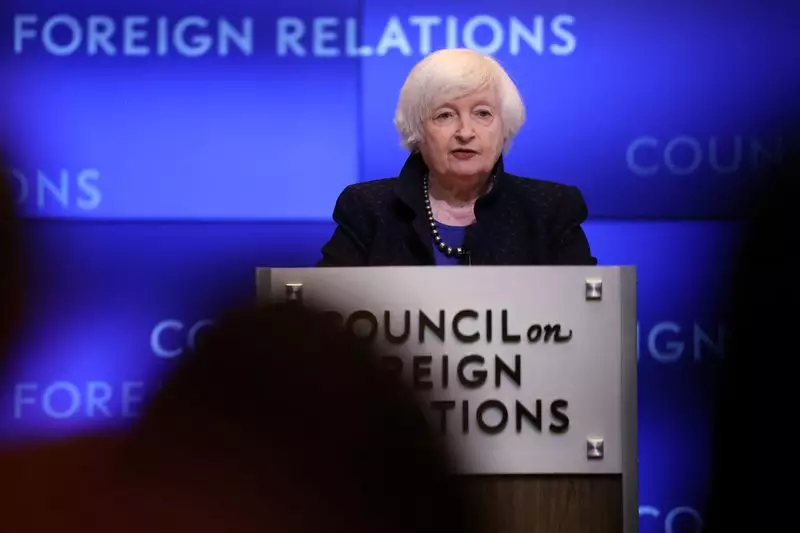The COVID-19 pandemic presented unprecedented challenges to economies worldwide, prompting governments to implement emergency measures to stave off potential collapse. In the U.S., the Biden administration, under the guidance of Treasury Secretary Janet Yellen, has defended its response strategy, which combined substantial fiscal stimulus with policies aimed at sustaining economic stability. Despite criticisms regarding inflation, Yellen’s remarks paint a picture of a recovery that, while robust, still requires attention to deeper structural issues within the economy.
At the heart of the Biden administration’s economic strategy was the $1.9 trillion American Rescue Plan, launched in March 2021, following a series of COVID-related spending initiatives exceeding $3 trillion during the previous administration. The intent was clear: to inject liquidity into a faltering economy, preserve livelihoods, and stimulate consumer spending. Yellen highlights that direct financial assistance, including stimulus checks, enhanced unemployment benefits, and monthly child tax credits, played a critical role in cushioning the blow felt by millions who lost their jobs or saw their income drastically reduced. This approach not only provided immediate relief but also fostered demand in a climate ravaged by pandemic-induced shortages.
Yellen, however, has also acknowledged the complexity of the outcomes. In a nuanced view, she proposed that while stimulus measures might have contributed marginally to inflation, the benefits of preventing massive job losses and facilitating a quicker recovery outweighed potential negative consequences. This points to a larger debate within economic circles about the optimal balance between inflation control and employment stabilization.
One of the critical aspects of Yellen’s defense revolves around the comparative success of the U.S. economy in recovering from the pandemic compared to its peers. She emphasizes that the American economy experienced a remarkable recovery trajectory, outpacing other developed nations and faring better than in previous economic downturns. The inflation rate, which surged across the globe, showed signs of stabilization earlier in the U.S., suggesting effective management in an oddly volatile environment.
This comparative perspective raises questions about the strategies deployed by different countries and how the choices of U.S. policymakers may serve as a case study for future crises. While some nations opted for austerity or delayed action, the U.S. embraced bold fiscal interventions, which, according to Yellen, provided critical support during the recovery period.
A focal point in Yellen’s address was the unemployment rate, which has remained below 4% for an extended period—a feat not witnessed since the 1960s. She posits that this achievement reflects the successful navigation through a dire labor market crisis. The potential consequences of a high unemployment rate during inflationary pressures could have led to a paradox where maintaining price stability resulted in elevated rates of joblessness, significantly harming socioeconomic mobility.
Yellen’s reference to the need for an unemployment rate that could have soared between 10% to 14% to sustain low inflation underscores a critical choice made by policymakers: prioritizing job preservation over immediate inflation concerns, which, while controversial, seems to have established a more resilient economic framework.
Despite the positive indicators, Yellen acknowledges that significant challenges remain. While the economy currently shows signs of resilience, including a strong labor market and steady growth, deep-seated structural issues must be addressed to ensure long-term prosperity for American families. The notion of “modern supply-side economics,” a framework championed by Yellen, stresses the importance of investing in infrastructure, labor force development, and technological innovation rather than relying solely on tax cuts and deregulation.
This approach advocates for a more equitable distribution of resources, which could pave the way for sustainable economic growth that is inclusive and beneficial for the middle-class families struggling to secure their financial futures.
The Biden administration’s response to the COVID-19 pandemic has showcased a multifaceted strategy aimed at balancing immediate economic relief with long-term viability. The defense by Janet Yellen accentuates the critical decisions made during an era fraught with uncertainty. As the U.S. economy emerges from this crisis, the focus on structural reforms and equitable growth will be paramount in shaping a future that not only recovers but thrives amidst potential challenges. Importantly, while the achievements thus far are commendable, they must be continuously scrutinized to ensure that the narrative of recovery translates into real, lasting benefits for all Americans.

